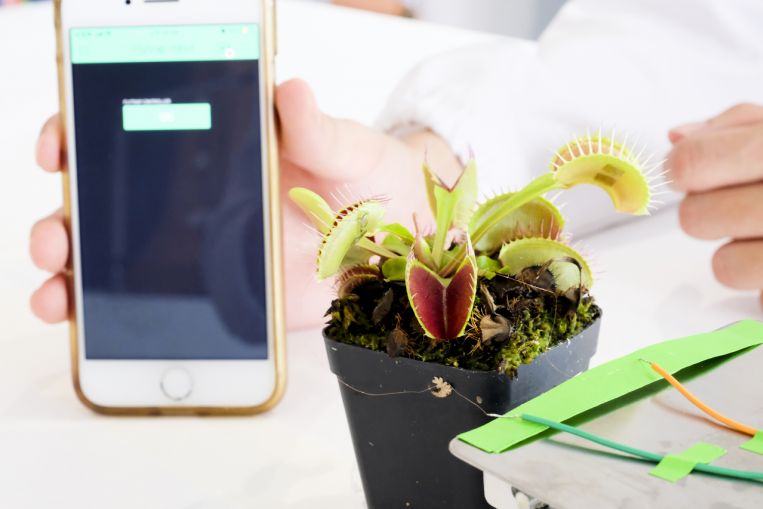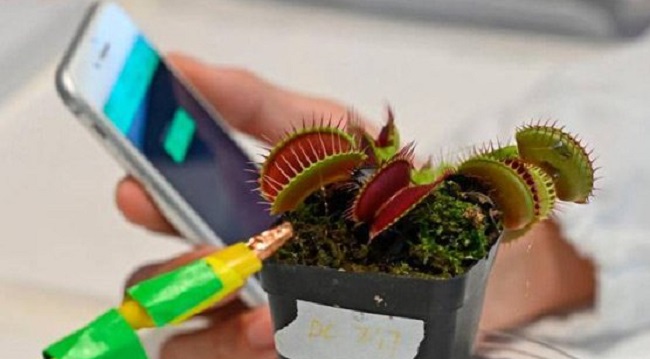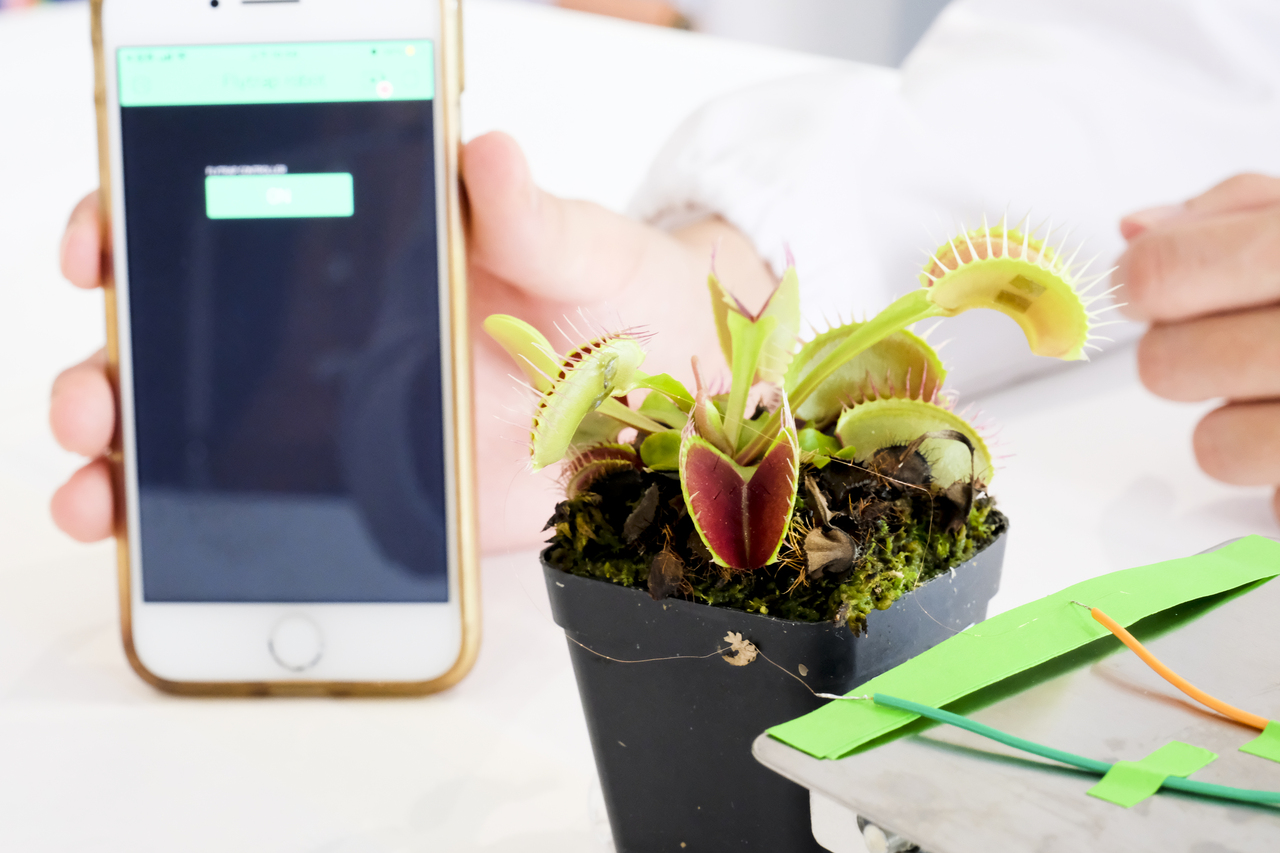A new robotic grabber is ripped straight from the plant world. The device, made with a severed piece of a Venus flytrap, can grasp tiny, delicate objects. Researchers in Singapore linked up plants to electrodes capable of monitoring the weak electrical pulses naturally emitted by the greenery.

The scientists used the technology to trigger a Venus flytrap to snap its jaws shut at the push of a button on a smartphone app. They then attached one of its jaws to a robotic arm and got the contraption to pick up a piece of wire half a millimeter thick, and catch a small falling object.

The technology is in its early stages, but researchers believe it could eventually be used to build advanced “plant-based robots” that can pick up a host of fragile objects which are too delicate for rigid, robotic arms.

There are still challenges to be overcome. Scientists can stimulate the flytrap’s jaws to slam shut but can’t yet reopen them — a process that takes 10 or more hours to happen naturally. Researchers believe such technology could be particularly useful as crops face increasing threats from climate change. Scientists have long known that plants emit very weak electrical signals but their uneven and waxy surfaces make it difficult to effectively mount sensors.
The Nanyang Technological University researchers developed film-like, soft electrodes that fit tightly to the plant’s surface and can detect signals more accurately. They are attached using a “thermogel”, which is liquid at low temperatures but turns into a gel at room temperature.
According to The Straight Times














